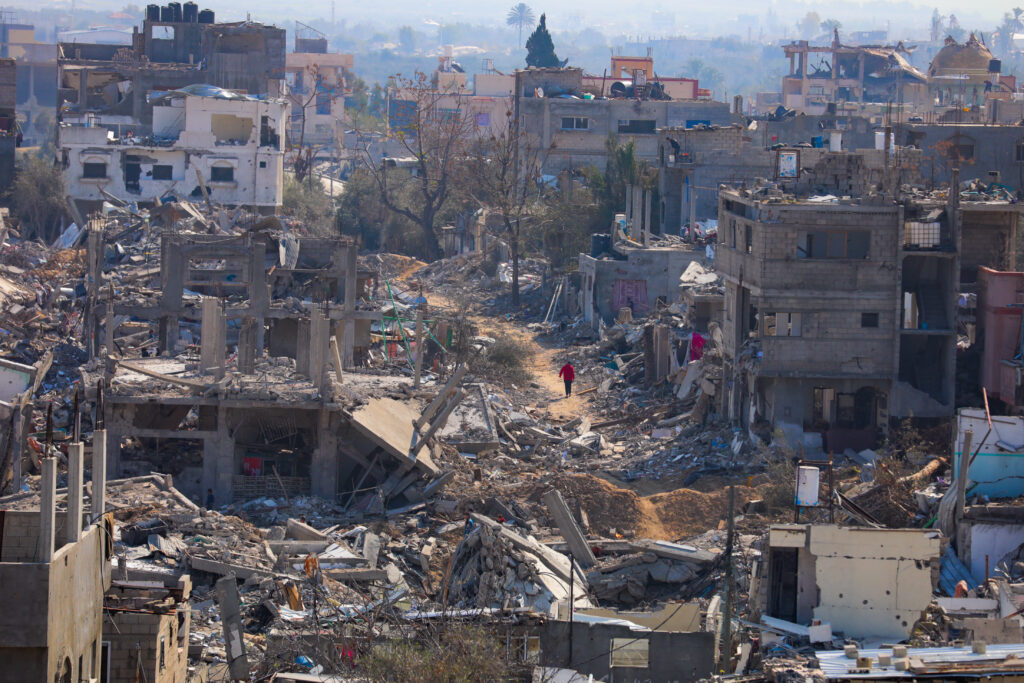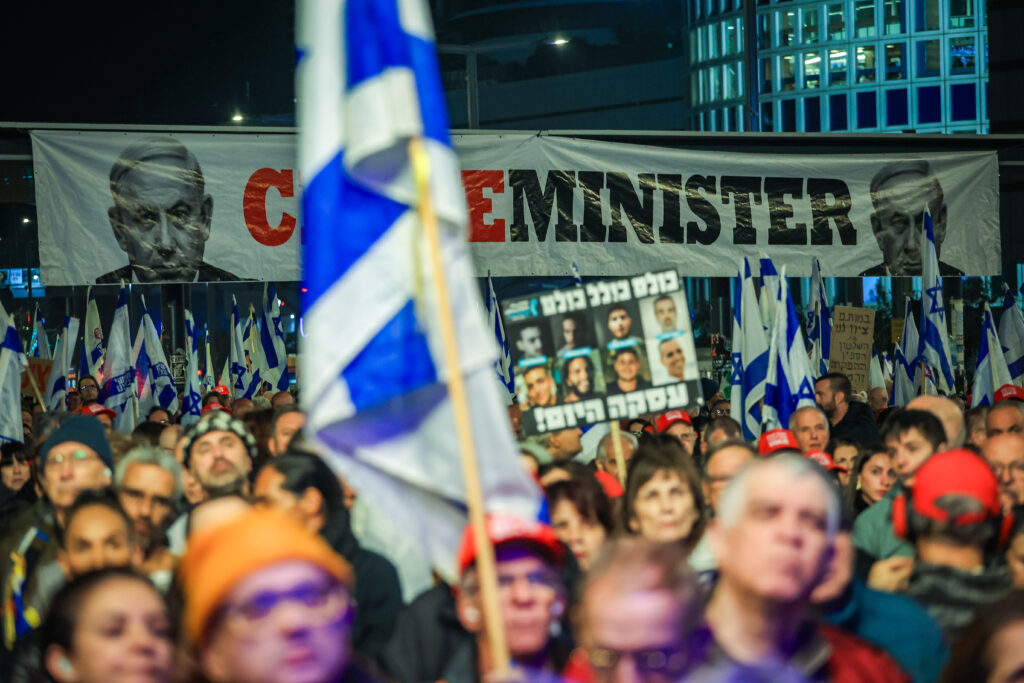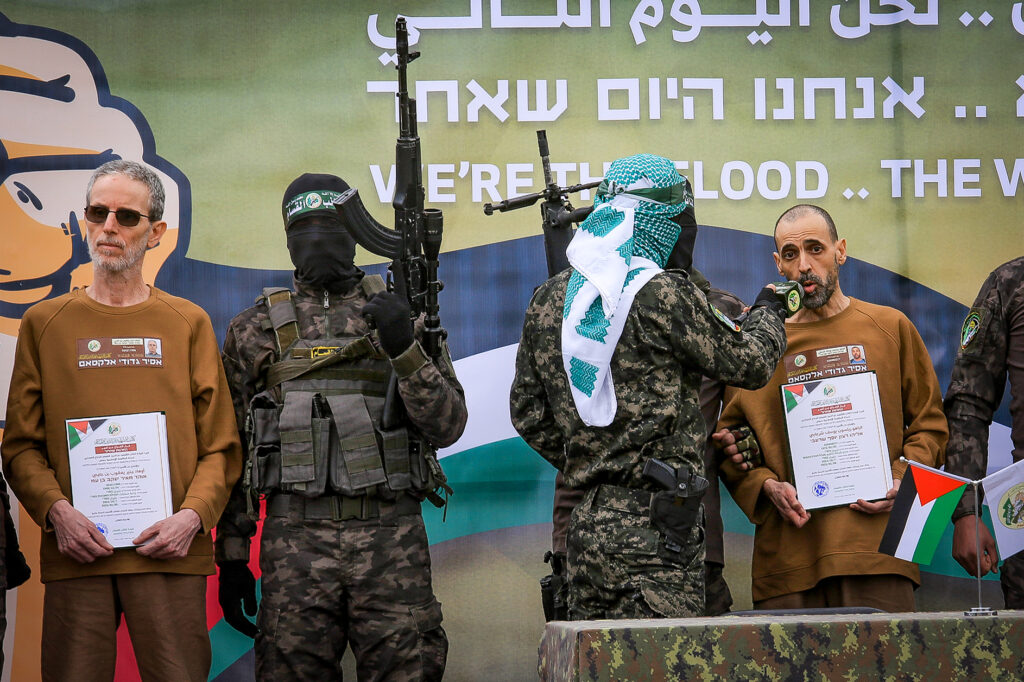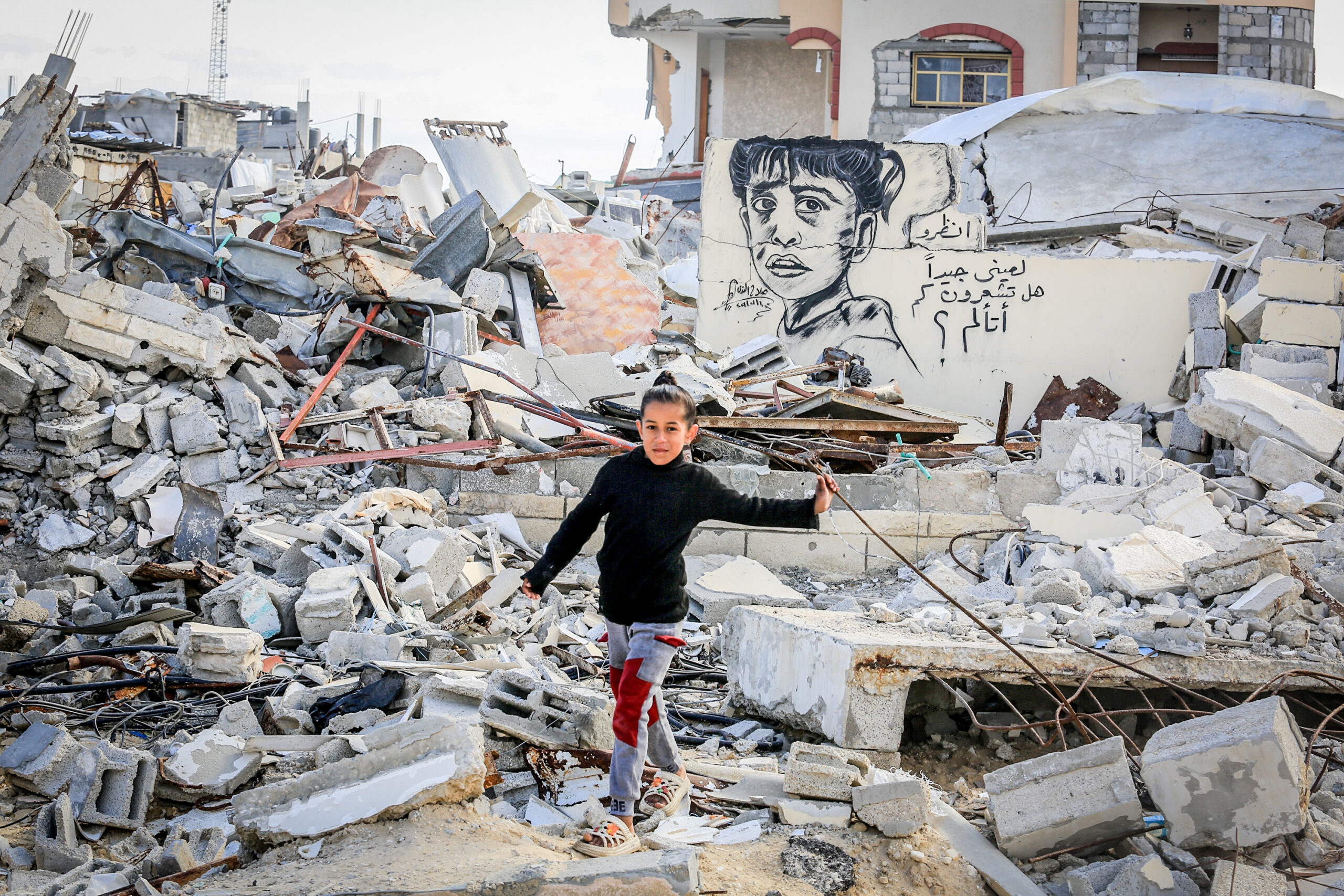65% of Gaza’s Buildings Destroyed, Reconstruction May Take a Decade
Satellite analysis reveals that approximately 65% of Gaza’s infrastructure has been destroyed due to the prolonged Israel-Hamas conflict, leaving behind massive amounts of debris, according to reports in Israeli media.
Experts predict that rebuilding the region could take at least 10 years and cost billions of dollars. Israel’s Channel 12 News commissioned an assessment of satellite imagery, led by GIS specialist Adi Ben-Nun from the Hebrew University of Jerusalem.
The analysis revealed extensive damage in various parts of Gaza: Northern Gaza saw 84% of its buildings destroyed (25,927 structures), while Gaza City experienced 72% destruction (35,722 buildings). Central refugee camps lost around 33% of their infrastructure (10,375 buildings), while Khan Yunis and Rafah in southern Gaza had damage rates of 73% (32,908 buildings) and 52% (15,434 buildings), respectively.

Jabaliya, located just north of Gaza City, was hit the hardest, with nearly 19,000 structures—or 100% of its buildings—destroyed. Similarly, all buildings within a one-mile radius of the Gaza-Israel border were wiped out. Areas near the Netzarim Corridor, separating northern and southern Gaza, also suffered complete devastation.
Satellite imagery confirms that a buffer zone between Gaza and Israel has been completed. U.S. Mideast envoy Steve Witkoff recently visited the region and described the situation as uninhabitable due to hazards like unexploded munitions, structural instability, and lack of utilities.
Witkoff stressed that Gaza’s reconstruction would take years, with the disposal of munitions alone estimated to take three to five years. He endorsed U.S. President Donald Trump’s initiative to relocate Gaza’s population, arguing that long-term well-being isn’t tied to a specific location but to improved living standards and opportunities.
Netanyahu Alleges Foreign Funding Behind Anti-Government Protests
Israeli Prime Minister Benjamin Netanyahu addressed reports on Monday suggesting that foreign funding played a significant role in the large-scale protests against his government. He described these demonstrations as a “so-called ‘popular and spontaneous’ movement” fueled by outside resources.
Netanyahu referred to reports that the United States Agency for International Development (USAID) had provided financial support to Blue and White Future, an Israeli NGO that assists groups opposing his administration. The Trump administration has already announced plans to dissolve USAID, citing accusations of inefficient spending, and to integrate its responsibilities into the U.S. State Department.

The prime minister’s remarks came during a Knesset debate over no-confidence motions introduced by opposition factions. As the leader of the Likud party, Netanyahu sought to highlight the external influences behind domestic unrest while defending his coalition’s policies.
The protests, which have garnered international attention, focus on various issues, including opposition to judicial reforms and Netanyahu’s leadership. The government has consistently framed the demonstrations as being orchestrated by political rivals with foreign backing, rather than a genuine grassroots movement.

UN Chief Urges Hamas to Fulfill Hostage Release Agreement
United Nations Secretary-General António Guterres called on Hamas on Tuesday to comply with the terms of its ceasefire agreement with Israel by releasing additional Israeli hostages.
Guterres expressed concern about the fragile state of the ceasefire, emphasizing the need to avoid any resumption of violence. “We must prevent a return to hostilities at all costs, as it would bring immense tragedy,” Guterres tweeted. He urged Hamas to follow through with the planned release of hostages and called on both parties to adhere to the ceasefire terms and resume meaningful negotiations.
The hostages released today from Hamas captivity looked gaunt and broken. They then had to hear that their loved ones had been murdered.
— Victims’ Commissioner London (@LDNVictimsComm) February 8, 2025
Today’s images have triggered the trauma of the Holocaust for Jewish people. If you have Jewish friends, please do reach out to them. pic.twitter.com/IhUTITuDEk
On Monday night, Hamas announced that it would delay the scheduled Feb. 15 release of hostages, accusing Israel of violating the truce. Israeli Defense Minister Israel Katz condemned the move, calling it a “blatant breach of the agreement,” and instructed the military to prepare for potential escalation.
The strained ceasefire follows months of conflict and a series of hostage exchanges. Tensions escalated after Guterres was declared persona non grata in Israel in 2024 by then-Foreign Minister Israel Katz. The decision came after Guterres failed to condemn attacks on Israeli civilians, including the violence on Oct. 7, which Israel attributed to Hamas militants.

Israel has maintained that it will not compromise its security or sovereignty, with Katz previously labeling Guterres “a stain on the history of the United Nations” for failing to address Israel’s security concerns.




